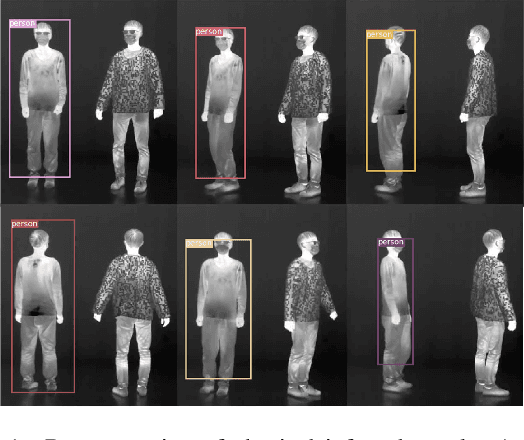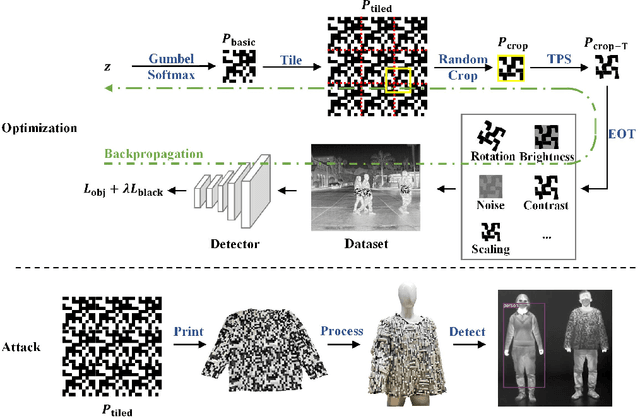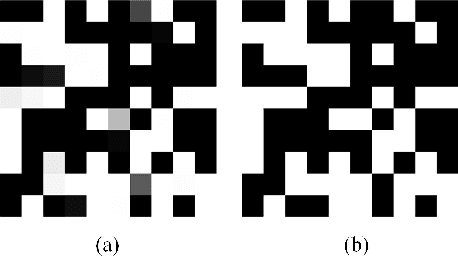Infrared Invisible Clothing:Hiding from Infrared Detectors at Multiple Angles in Real World
Paper and Code
May 12, 2022



Thermal infrared imaging is widely used in body temperature measurement, security monitoring, and so on, but its safety research attracted attention only in recent years. We proposed the infrared adversarial clothing, which could fool infrared pedestrian detectors at different angles. We simulated the process from cloth to clothing in the digital world and then designed the adversarial "QR code" pattern. The core of our method is to design a basic pattern that can be expanded periodically, and make the pattern after random cropping and deformation still have an adversarial effect, then we can process the flat cloth with an adversarial pattern into any 3D clothes. The results showed that the optimized "QR code" pattern lowered the Average Precision (AP) of YOLOv3 by 87.7%, while the random "QR code" pattern and blank pattern lowered the AP of YOLOv3 by 57.9% and 30.1%, respectively, in the digital world. We then manufactured an adversarial shirt with a new material: aerogel. Physical-world experiments showed that the adversarial "QR code" pattern clothing lowered the AP of YOLOv3 by 64.6%, while the random "QR code" pattern clothing and fully heat-insulated clothing lowered the AP of YOLOv3 by 28.3% and 22.8%, respectively. We used the model ensemble technique to improve the attack transferability to unseen models.
 Add to Chrome
Add to Chrome Add to Firefox
Add to Firefox Add to Edge
Add to Edge